c. 9,500 casualties 8,470 casualties | ||
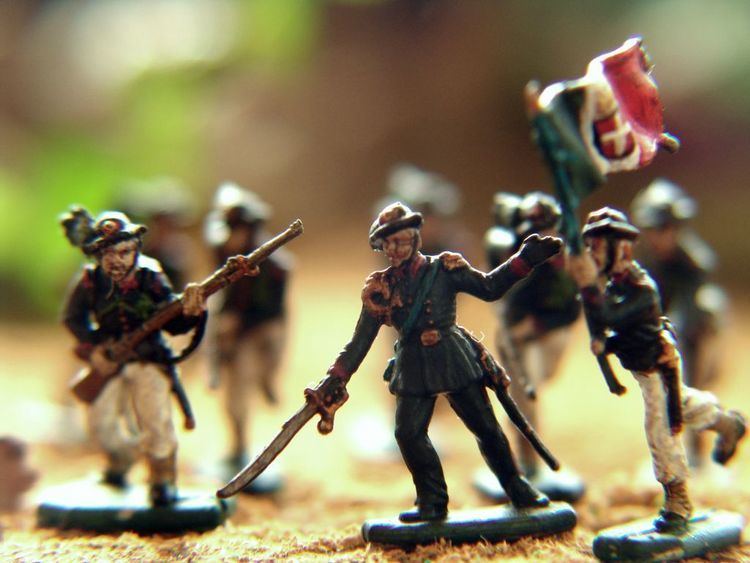 | ||
Mincio Army11 infantry divisions1 cavalry divisionTotal 120,000 menPo Army5 infantry divisionsTotal 80,000 menGaribaldi's forcesVolunteer battalionsTotal20,000 menTotal 220,000 men South ArmyV, VII, IX Corps2 cavalry brigadesTotal 130,000 men Similar First Italian War of Independence, Second Italian War of Indepe, Battle of Lissa, Expedition of the Thousand, Battle of Custoza | ||
wars the third italian war of independence 1866 every day
The Third Italian War of Independence (Italian: Terza Guerra d'Indipendenza Italiana) was a conflict which paralleled the Austro-Prussian War, and was fought between the Kingdom of Italy and the Austrian Empire.
Contents
- wars the third italian war of independence 1866 every day
- Third italian war of independence
- Background
- Italian preparedness
- Italian invasion
- New Italian offensive
- Aftermath
- References

Third italian war of independence
Background
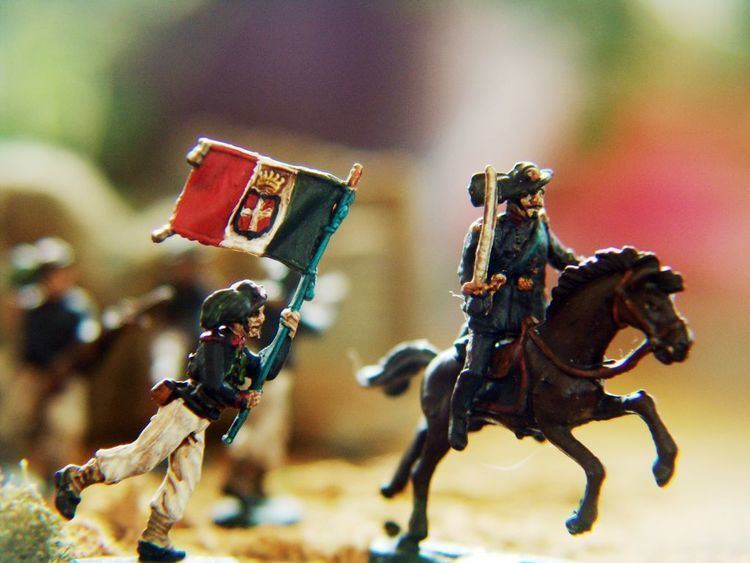
Victor Emmanuel II of Savoy had been crowned King of Italy on March 17, 1861, but did not control Venetia and the much reduced Papal States. The situation of the Irredente (a later Italian term for part of the country under foreign domination, literally meaning un-redeemed) was an unceasing source of tension in the domestic politics of the newly created Kingdom, as well as being a cornerstone of its foreign policy.
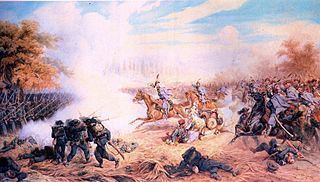
The first attempt to seize Rome was orchestrated by Giuseppe Garibaldi in 1862. Confident in the King's neutrality, he set sail from Genoa to Palermo. Collecting 1,200 volunteers, he sailed from Catania and landed at Melito, in Calabria, on August 24 to reach Mount Aspromonte, with the intention to travel northwards up the peninsula to Rome. The Piedmontese General Enrico Cialdini, however, sent a division under Colonel Pallavicino to stop the volunteer army. Garibaldi himself was wounded in the ensuing battle, and taken prisoner along with his men.
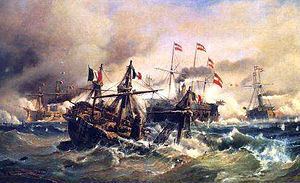
The increasing discord between Austria and Prussia over the German Question turned into open war in 1866, offering Italy an occasion to capture Venetia. On April 8, 1866 the Italian government signed a military alliance with Prussia, through the mediation of Emperor Napoleon III of France. Italian armies, led by General Alfonso Ferrero La Marmora, were to engage the Austrians on the southern front. Simultaneously, taking advantage of their perceived naval superiority, the Italians planned to threaten the Dalmatian coast and seize Trieste.
Italian preparedness
Upon the outbreak of the war, the Italian military was hampered by the following factors:

Italian invasion
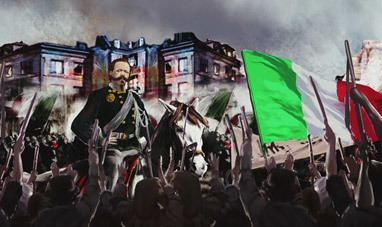
Prussia opened hostilities on 16 June 1866 by attacking several German states allied with Austria. Three days later, Italy declared war on Austria, starting military operations on 23 June.
The Italian forces were divided into two armies: the first, under La Marmora himself, was deployed in Lombardy, west of the Mincio River, aiming toward the powerful Quadrilatero fortress of the Austrians; the second, under Enrico Cialdini, in Romagna, south of the Po River, aiming toward Mantua and Rovigo.
La Marmora moved first through Mantua and Peschiera del Garda, but was defeated at the Battle of Custoza on 24 June and retreated disorderly back across the Mincio river. Cialdini, on the other hand, did not act offensively for the first part of the war, conducting only several shows of force and failed to besiege the Austrian fortress of Borgoforte, south of the Po.
Following the defeat at Custoza, the Italians reorganized in preparation for a presumed Austrian counter-offensive. The Austrians took this opportunity to raid Valtellina and Val Camonica (battle of Vezza d'Oglio).
New Italian offensive
The course of the war, however, was to turn in Italy's favour thanks to Prussian victories in Bohemia, especially the decisive Battle of Königgrätz on 3 July 1866. The Austrians were compelled to redeploy one of their three army corps from Italy to Vienna. The remaining Austrian forces in the theatre concentrated their defenses around Trentino and Isonzo.
On 5 July 1866, the Italian government received news of a mediation effort by Napoleon III for a settlement of the situation, which would allow Austria to receive favourable conditions from Prussia, and, in particular, to maintain Venice. The situation was embarrassing for Italy, as its forces had been beaten back in the only battle to date. As the Austrians were redeploying more and more troops to Vienna to defend it against the Prussians, La Marmora was urged to take advantage of his force's numerical superiority, score a victory, and thus improve the situation for Italy at the bargaining table.
On 14 July, during a council of war held in Ferrara, the new Italian war plans were decided, according to the following points:
Cialdini crossed the Po on 8 July, advancing to Udine on 22 July without encountering the Austrian army. In the meantime, Garibaldi's volunteers had advanced from Brescia in the direction of Trento in the Invasion of Trentino, winning the battle of Bezzecca on 21 July. Cialdini's and Garibaldi's advances were overshadowed, however, by the unexpected defeat of the Italian Navy at the Battle of Lissa on 20 July.
The Italian gains remained rather limited and with the cessation of Austro-Prussian hostilities, the Austrians looked ready to send reinforcements to Italy. Unwilling to risk another defeat and facing the risk of being severely outnumbered by Austrian reinforcements, the Italians were compelled to come to the peace table. On 9 August, Garibaldi was ordered in a telegraph by the Army High Command to evacuate Trentino. His reply was simply "Obbedisco" ("I shall obey") and became famous in Italy soon after. The cessation of hostilities was agreed to at the Armistice of Cormons signed on 12 August, followed by the Treaty of Vienna on 3 October 1866.
Aftermath
The terms of the Peace of Prague included the giving of the Iron Crown of Lombardy to the Italian king and the cession of Venetia to France, as Napoleon III was acting as intermediary between Prussia and Austria. The Austrians also refused to surrender Venetia directly to Italy as the Italian army had performed very poorly and had not defeated the Austrian army. The Italians felt humiliated that they were not involved in the Austro-Prussian peace talks, and that they were to receive Venetia as a gift from France. In order to avoid such humiliation, the Italians demanded they would only annex Venetia after a plebiscite, in order for it to appear as the will of the people rather than a French gift. The Peace of Prague was followed up by the Austrian-Italian Treaty of Vienna, which confirmed the cession of the territory to Italy The plebiscite was held on 21 and 22 October 1866 and the result was overwhelmingly in support of joining Italy. During this period, an uprising also occurred in Sicily, called The Seven and a Half Days Revolt.
The unification of Italy was completed by the Capture of Rome and and the liberation of Trentino, Friuli and Trieste at the end of First World War, also called in Italy Fourth Italian War of Independence.
